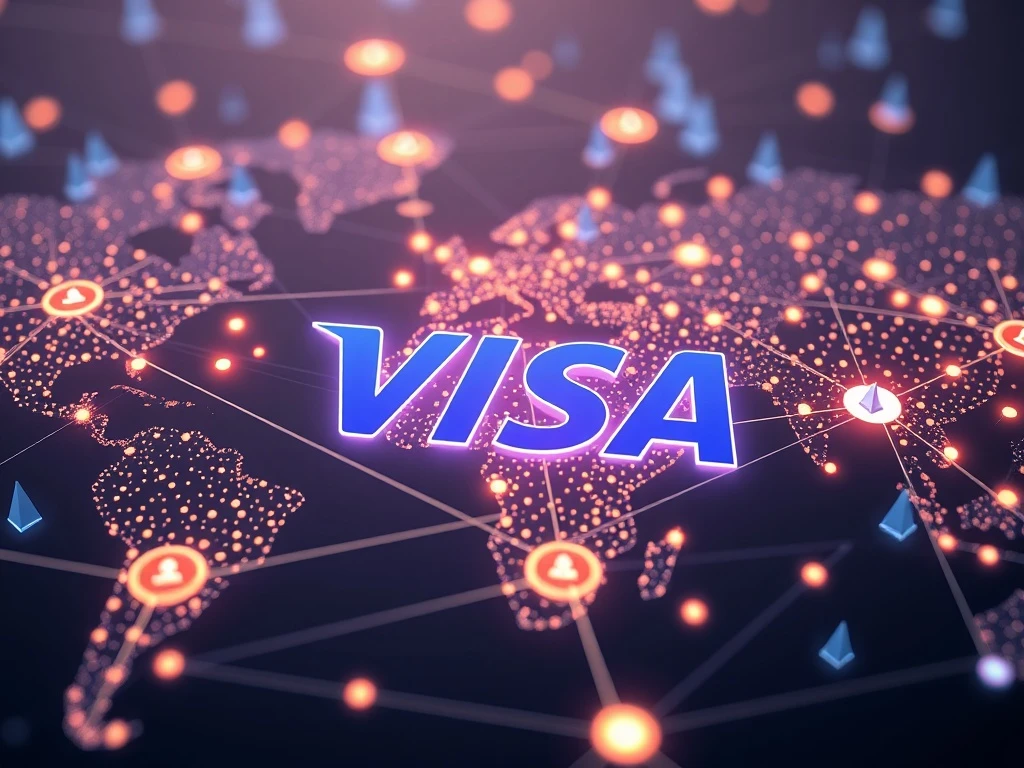Visa Revolutionizes Stablecoin Settlements with 3 New Coins and 2 Blockchains

Visa is taking a giant leap in the crypto world by integrating three new stablecoins—PayPal USD (PYUSD), USDG, and EURC—alongside two cutting-edge blockchain networks, Stellar and Avalanche. This bold move strengthens Visa’s position as a leader in global stablecoin-based transactions, offering faster, more efficient cross-border payments.
Why Visa’s Stablecoin Settlements Matter
Visa’s expansion into stablecoin settlements is a game-changer for digital finance. By supporting PayPal USD, USDG, and EURC, Visa now facilitates transactions across four stablecoins and four blockchains, including Ethereum and Solana. This multi-chain approach ensures scalability and interoperability, making it easier for businesses and consumers to transact globally.
Key Benefits of Visa’s New Stablecoin Integration
- Faster Cross-Border Payments: Stablecoins like PYUSD and EURC reduce transaction times from days to seconds.
- Lower Costs: Eliminates intermediary fees associated with traditional banking systems.
- Enhanced Flexibility: Supports both USD and EUR settlements, catering to diverse markets.
How Stellar and Avalanche Blockchains Boost Visa’s Platform
The integration of Stellar and Avalanche blockchains enhances Visa’s settlement infrastructure by offering:
| Blockchain | Advantage |
|---|---|
| Stellar | Low-cost, high-speed transactions ideal for emerging markets. |
| Avalanche | Scalability and sub-second finality for high-volume payments. |
What This Means for European Businesses
With the addition of EURC, Visa enables euro-denominated settlements, simplifying transactions for European merchants. This is particularly impactful for cross-border trade, where currency conversion fees and delays have long been a pain point.
Visa’s Vision for the Future of Stablecoin Settlements
Visa’s CEO, Ryan McInerney, envisions stablecoins as a solution to global payment inefficiencies. The company plans to further expand its crypto infrastructure, ensuring it matches the reliability of traditional card payments. This initiative is already rolling out in Central and Eastern Europe, the Middle East, and Africa, with partners like Yellow Card driving adoption.
Conclusion: A New Era for Digital Payments
Visa’s integration of three new stablecoins and two blockchains marks a pivotal moment in the evolution of digital finance. By bridging the gap between crypto and traditional payments, Visa is paving the way for a more inclusive and efficient global financial system.
Frequently Asked Questions (FAQs)
- Which stablecoins does Visa now support?
Visa supports PayPal USD (PYUSD), USDG, EURC, and its previously integrated stablecoins. - What blockchains are part of Visa’s settlement platform?
Ethereum, Solana, Stellar, and Avalanche. - How does EURC benefit European businesses?
EURC allows euro-denominated settlements, reducing currency conversion costs and delays. - Is Visa’s stablecoin settlement available worldwide?
Currently expanding in Central/Eastern Europe, the Middle East, and Africa, with plans for broader rollout. - How does Visa ensure the security of stablecoin transactions?
Visa leverages blockchain security features and partners with trusted issuers like PayPal and Paxos.







